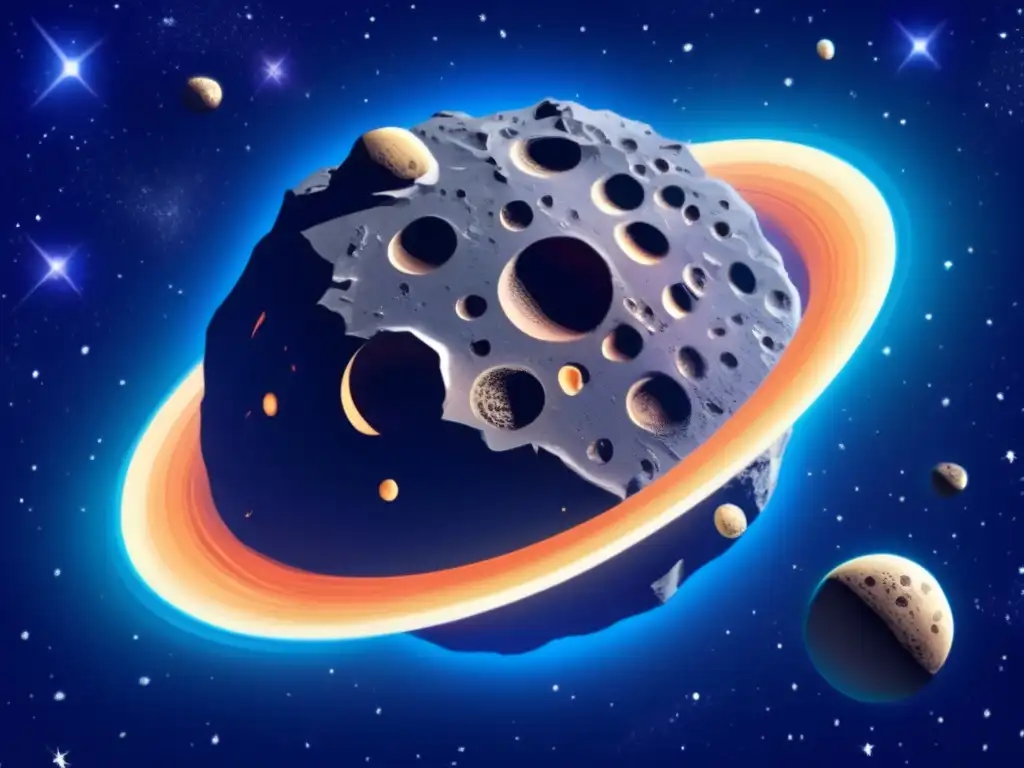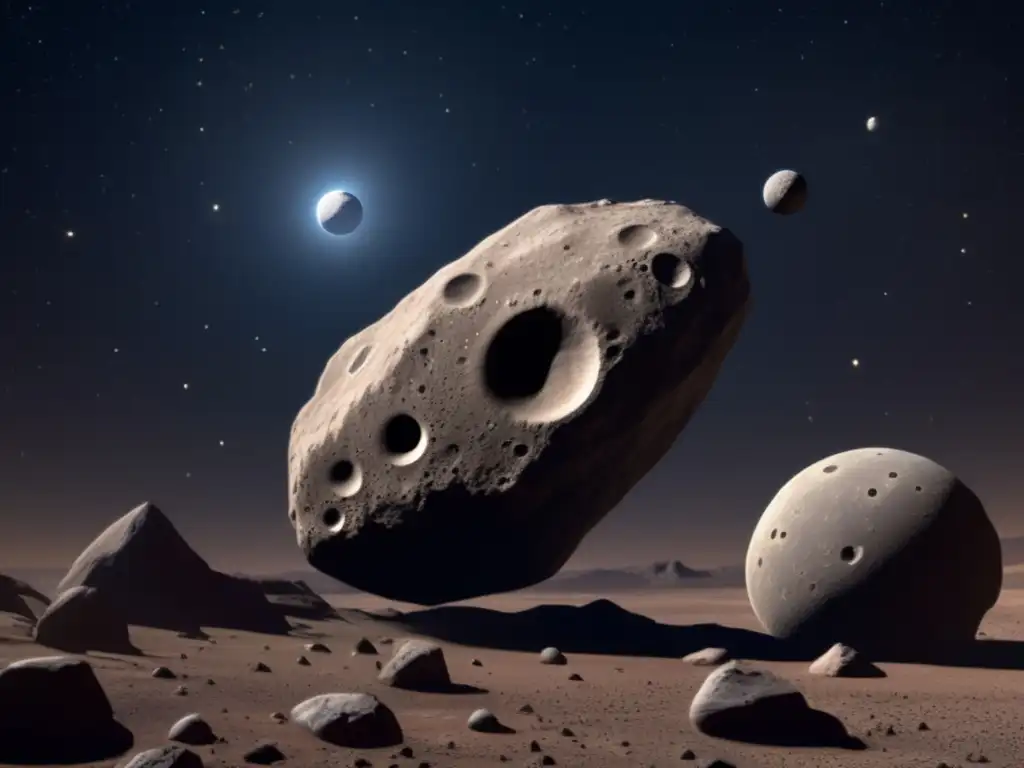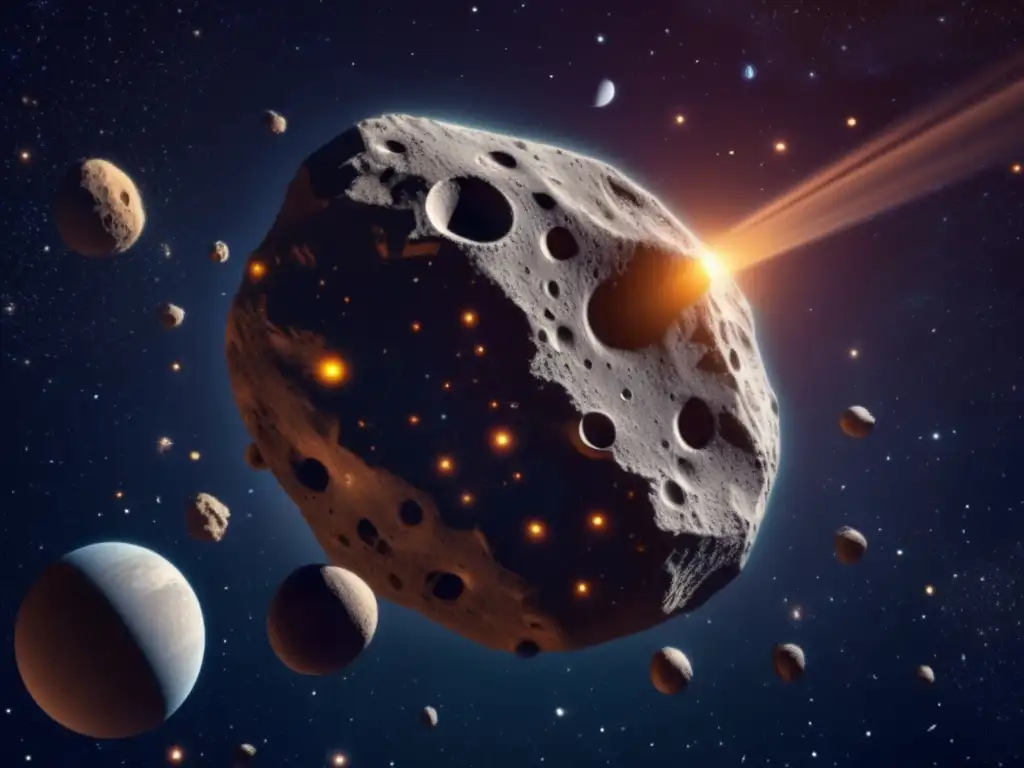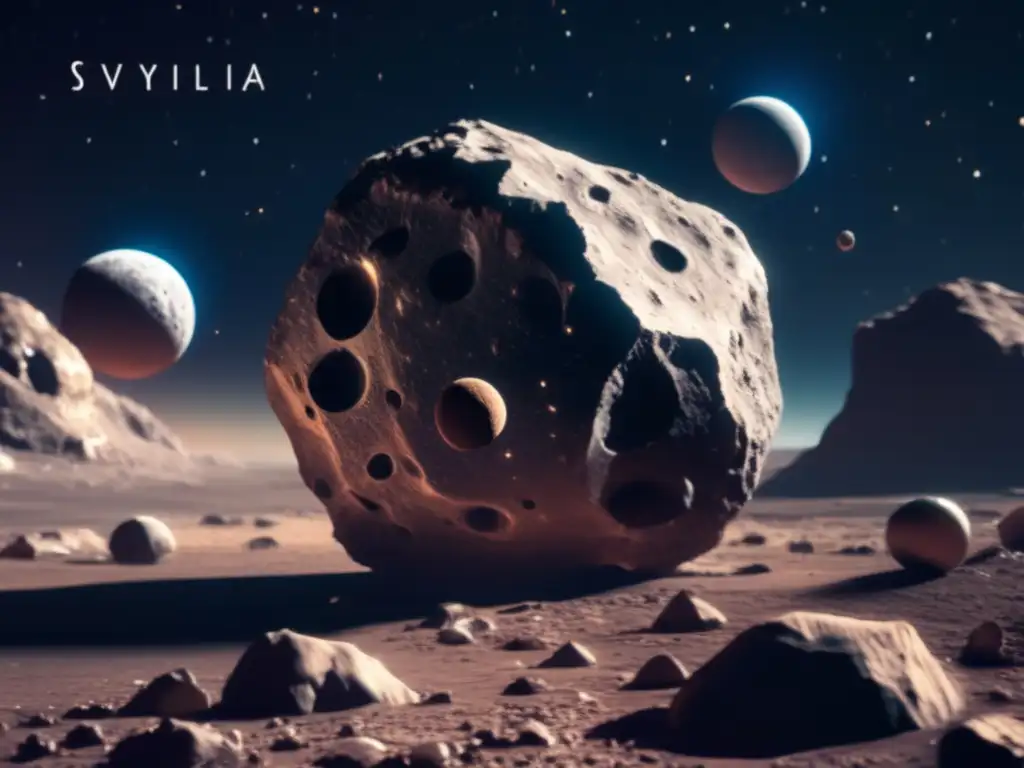Sylvia: The Asteroid With Two Moons – An Examination

Introduction
Asteroids are celestial objects that inhabit the vastness of space. Their discovery has led us to uncover some of the mysteries of our solar system, including the origins of our universe. Sylvia is one such asteroid that has captured the interest of astronomers and space enthusiasts alike. Discovered in 1866, Sylvia is a unique asteroid in that it has two moons orbiting around it. In this article, we will take a closer look at this fascinating asteroid and its two moons.
The Discovery of Sylvia

The Early Days of Asteroid Hunting
Asteroid searching began in the early 1800s, with the first known asteroid being discovered in 1801 by Italian astronomer Giuseppe Piazzi. As telescopes advanced, more and more asteroids were discovered. This led to the creation of the term "asteroid belt," referring to the region between Mars and Jupiter where most asteroids reside.
The Discovery of Sylvia
Sylvia was discovered on May 16, 1866, by French astronomer N.R. Pogson. It was named after Rhea Sylvia, a mythological character from Roman mythology who was the mother of Romulus and Remus, the founders of the city of Rome. Sylvia resides in the middle of the asteroid belt and orbits around the Sun every 6.5 years.
The Two Moons of Sylvia

The Discovery of Sylvia’s Moons
Sylvia's two moons, Romulus and Remus, were discovered in 2001 by Michael E. Brown and his team at the California Institute of Technology. The moons are named after the mythical founders of Rome, in keeping with the asteroid's naming conventions. The discovery of the moons was made using images obtained from the Keck II telescope located on Mauna Kea, Hawaii.
The Characteristics of Romulus and Remus
The two moons of Sylvia are irregularly shaped and have a rocky surface. They are both relatively small, with Romulus being the larger of the two and measuring approximately 18 kilometers in diameter, while Remus has a diameter of around 7 kilometers. Both of the moons orbit around Sylvia, with Romulus taking around 33 hours to complete one orbit and Remus taking around 10 hours.
The Composition of Sylvia

Sylvia: A Binary Asteroid
Sylvia is classified as a binary asteroid, meaning that it is composed of two distinct objects that orbit around each other. The two objects that make up Sylvia have been estimated to be around 286 and 150 kilometers in diameter, respectively. The composition of Sylvia is unique in that it contains a significant amount of water ice, making up around 25% of its total volume.
The Origin of Sylvia
Scientists believe that Sylvia is likely a remnant of an ancient collision between two larger asteroids. The water ice found on Sylvia suggests that it could have once been part of a much larger body that contained water. The presence of two moons around Sylvia further indicates that it may have formed through a complex series of events.
Frequently Asked Questions

-
What is Sylvia?
Sylvia is a binary asteroid located in the asteroid belt between Mars and Jupiter. It was discovered in 1866 and is named after a Roman goddess.
-
What makes Sylvia unique?
Sylvia is unique in that it is a binary asteroid with two moons orbiting around it. It also contains a significant amount of water ice, which is unusual for an asteroid.
-
Who discovered Sylvia’s moons?
Sylvia's moons, Romulus and Remus, were discovered in 2001 by Michael E. Brown and his team at the California Institute of Technology.
-
How were Sylvia's moons discovered?
The discovery of Romulus and Remus was made using images obtained from the Keck II telescope located on Mauna Kea, Hawaii.
-
What is the composition of Sylvia?
Sylvia is composed of two distinct objects that orbit around each other. It contains a significant amount of water ice, making up around 25% of its total volume.
Conclusion
Sylvia is a fascinating asteroid that has captured the imagination of many. Its unique composition and the fact that it has two moons orbiting around it make it an interesting subject of study for astronomers and space enthusiasts alike. While we may never know all the secrets that Sylvia holds, its discovery has allowed us to gain a better understanding of the mysteries of our universe.
We hope you found this examination of Sylvia and its two moons informative. If you have any thoughts or comments, please feel free to share them below. Don't forget to subscribe to www.asteroidrealm.com for more interesting articles on asteroids and their significance.
Additional Resources

For those interested in learning more about Sylvia and asteroids, here are some additional resources:
- NASA's In-Depth Exploration of Sylvia
- Space.com's Article on Sylvia's Binary Nature
- Live Science's Overview of Sylvia
 Geographos: A Close Look At This Elongated Near-Earth Asteroid
Geographos: A Close Look At This Elongated Near-Earth Asteroid Investigating The Unique Features Of Asteroid Hector
Investigating The Unique Features Of Asteroid Hector Haumea's Ring: A Study Of One Of The Most Distant Asteroids
Haumea's Ring: A Study Of One Of The Most Distant AsteroidsIf you want to discover more articles similar to Sylvia: The Asteroid With Two Moons – An Examination, you can visit the Asteroid Profiles category.
Leave a Reply

Articulos relacionados: